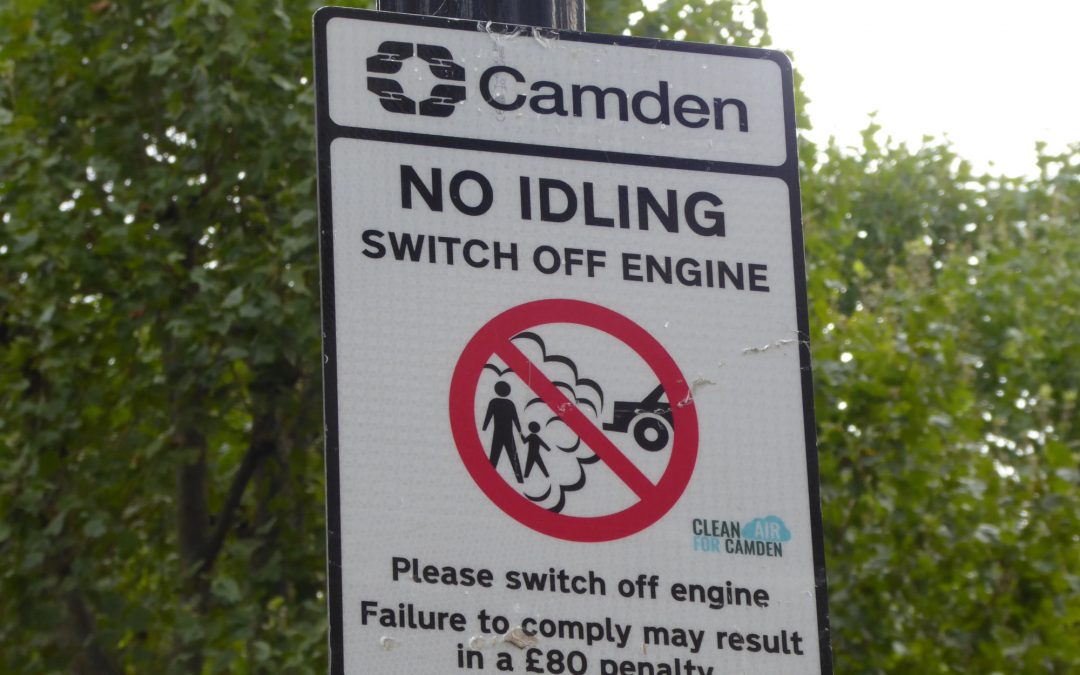Camden Council wants residents to tell it what it thinks of its draft Clean Air Action Plan 2022-2026 in a public consultation which closes this month.
“Air pollution is the largest environmental risk for health. Everyone is affected by air pollution and clean air is important for us all,” says Camden.
“Our Camden Clean Air Action Plan 2022-2026 describes what Camden Council and other partners will do to improve air quality and protect health from air pollution over the next four years.
“It also provides useful information, guidance and suggestions to help you protect your own health by avoiding air pollution and reducing emissions from your own activities,” states the consultation invite.
At nearly 80 pages long it is a lot to trawl through and you may wonder if the council is just repeating a lot of stuff and ticking boxes to meet its legal obligations. Will the plan actually have any teeth?
Camden says its does: “This document goes beyond the legal requirements by committing to more ambitious air quality standards and including pollution sources not usually addressed by local authorities.”
Air pollution comes from a huge range of sources and the document sets out where the various pollutants come from and what can be done about it.
“Whenever we burn a fuel or another material we are producing NO2 and particulates. Particulates are also released when materials are crushed or broken (like on construction sites), from friction (for example between car tyres and the road surface) and also from chemical reactions in the air,” it says.
You do not need to read the whole document as the table of contents (on page 3) “lays out the different sections of the Camden Clean Air Strategy 2019-2034 and the Camden Clean Air Action Plan 2022-2026 so that you can quickly find the information of most interest to you”.
Camden has identified that commercial activity, construction and transport together make up the largest source of air pollution in the borough.
Construction is the largest source of PM10 emissions in Camden, closely followed by road transport.
“Commercial buildings are by far the largest source of PM2.5 emissions in Camden,
contributing half of all PM2.5 from activities occurring inside the borough. The majority of this is from commercial cooking,” states the document.
Transport in Camden is a source for 39 percent of all NOx emissions and 24 percent of all PM2.5 emissions in the borough.
With that in mind you can search for various things like “engine idling” and “enforcement” — where you may be disappointed by Camden’s lack of action on this.
Take for example: “Start a local anti-idling campaign using Idling Action London’s free toolkits and resources”; and “We will raise public awareness of vehicle engine idling as an avoidable source of air pollution”.
This will make a lot of residents see red. Does anyone really not understand that running an internal combustion engine while stationary is causing air and noise pollution?
Telling drivers to turn off their engine often results in a torrent of abuse and sometimes threats of violence.
Lack of awareness is not the problem. Lack of enforcement is.
For its part Camden has created a “borough-wide traffic management order (TMO) which came into effect in 2020 and which formally designated Camden as a zero idling borough, significantly enhancing the Council’s capacity to engage with idling drivers and issue penalty charges”.
But a report in March stated that Camden had only issued 28 fines for idling over the past ten years.
As the days and nights get colder we can expect drivers to again ignore the noise and air pollution and run their engines while taking a snooze in their vehicles. In the summer those same drivers were keeping the air-con on.
“Idling” is mentioned 33 times in the document while “enforce” or “enforcement” is mentioned only 11 times. And therein lies the problem.
Responding to complaints about the council’s own events and film management — yes, Camden actually generates extra sources of air pollution — the document is rather weak.
“We will work with partners to promote awareness of pollution from temporary generators used in filming and events”; and “We will explore options for limiting or prohibiting the use of diesel generators, focusing on avoidance, rationalisation, and emissions reductions” (my emphasis).
This content was originally published here.

